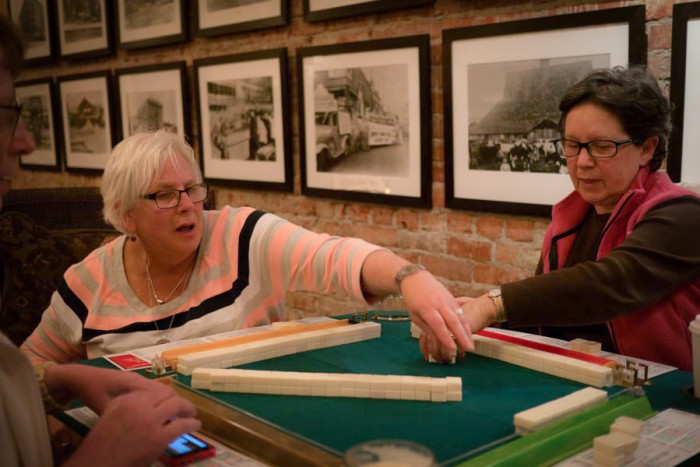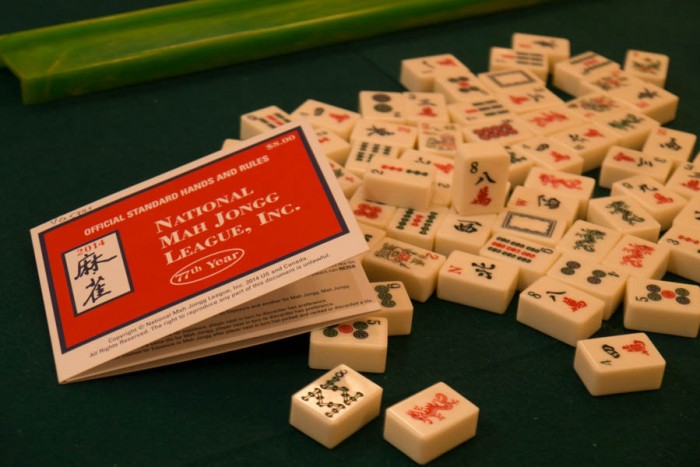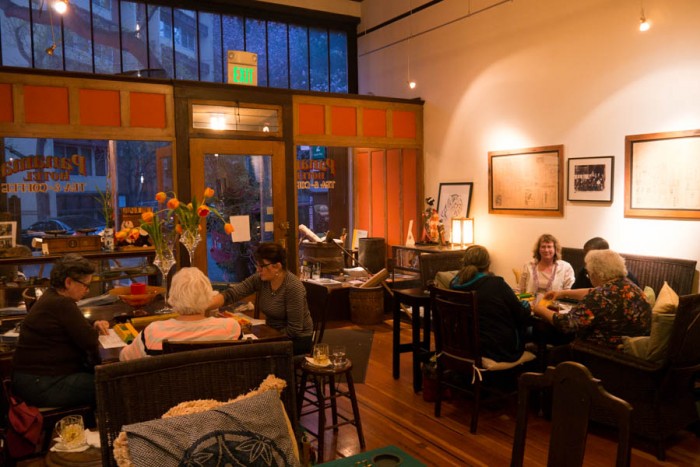
Mah Jongg is a game from China with a long history and complex rules. It also can be a lot of fun, as one group in Seattle knows.
Peggy Vargas is the organizer of Mah Jongg Fever, a Seattle group of players. Vargas says that she learned how to play from her rabbi’s wife.
“The Rebbetzin at my synagogue taught us to play Mah Jongg in 2008,” she said. “And we all got hooked on it.”
The group gathers at Uptown Espresso on the first and third Wednesday of each month, and Panama Hotel Tea & Coffee House in the International District on the second and fourth Wednesday of each month. Six years after Mah Jongg Fever was founded, 150 people have joined.
Mah Jongg, a game with estimated 700 million players worldwide, was imported to the United States in the 1920s and since then has been a popular activity in the United States.
There are some rule differences between American-style and Chinese-style Mah Jongg. American rules use the joker, which doesn’t exist in Chinese-style Mah Jongg. That’s not the only difference I noticed between American and Chinese Mah Jongg.
When my family played Mah Jongg in China, there was always cash-throwing, shouting and smoking. The atmosphere was quite tense because all the players were calculating, hoping to earn money from the game.
However, the games in Mah Jongg Fever are the opposite of what I have seen in China. There is a sense of the history coming from the Panama Hotel Tea & Coffee House. The pace of the game is much slower. All the players are reading the rule cards and chatting casually. It’s more like an academic seminar than an intense competition.
Vargas and her friends seem to be more serious than the casual player. Every Mah Jongg Fever player comes with a small suitcase, containing their own Mah Jongg set, rack and the newest version of rule card formulated by the American Mah Jongg Association.
There’s also a bit of cash-throwing, but not for bets. Each month, Vargas and her friends donate weekly to a different charity organization.
“I bring this wooden teapot, and suggest people throw in $5 a night, and donate to the charity.” Vargas says. It doesn’t sound like a lot, but since 2009, the amount has built up. Just last year, Mah Jongg Fever donated more than $500 to various charities, including Polaris Project, Northwest Parkinson’s Foundation, Youth Care, Northwest Harvest, Wounded Warriors, Childhaven in Seattle, Alzheimer’s Association and others.

The members of Mah Jongg Fever also get a lot of out of the game itself. Marie Martin, who lost her mother and husband in the past four months, regards Mah Jongg as a way of escaping from reality.
“It’s kind of distracting. And also, as I’m getting older, it’s challenging my mind. I should find something to learn and keep my mind active,” Martin says.
“Learning these complicated tiles and learning a new games makes you brain work, and helps create new connections in your brain.” Vargas says. “It can help to prevent Alzheimer’s disease.”
Doreen Zemble, another member of Mah Jongg Fever, agrees. As a retired woman, Zemble is keen on playing Mah Jongg.
Another difference I noticed between the U.S. and China was the age group. In China, a lot of young people enjoy the fun of Mah Jongg. To younger players in China, the calculating process during the game and the excitement of win may be the most attractive part.
However, Vargas acknowledges that there aren’t too many young people in Mah Jongg Fever.
“People playing Mah Jongg are older,” Vargas says. “As we are getting older now, we have more time. The young generation are busy, they have a different social life. They are playing computer games. Computer games are more popular.”
Vargas says young people are welcome and she hopes they join their games.
So what will happen if more and more young people join this game, I ask Vargas. Maybe they will drink during the game? Maybe be they will gamble?
Vargas pointed out that Panama Hotel Tea & Coffee House offers alcohol.
“You see that? They have a full bar here. Sometimes we drink, too,” she says. “Sometimes we play Mah Jongg and drink.”
So what will happen when Mah Jongg players drink, I ask. Will they go crazy?
“You never know!” says Vargas, with a laugh. “We’ve been drinking a lot longer than you guys have.”


